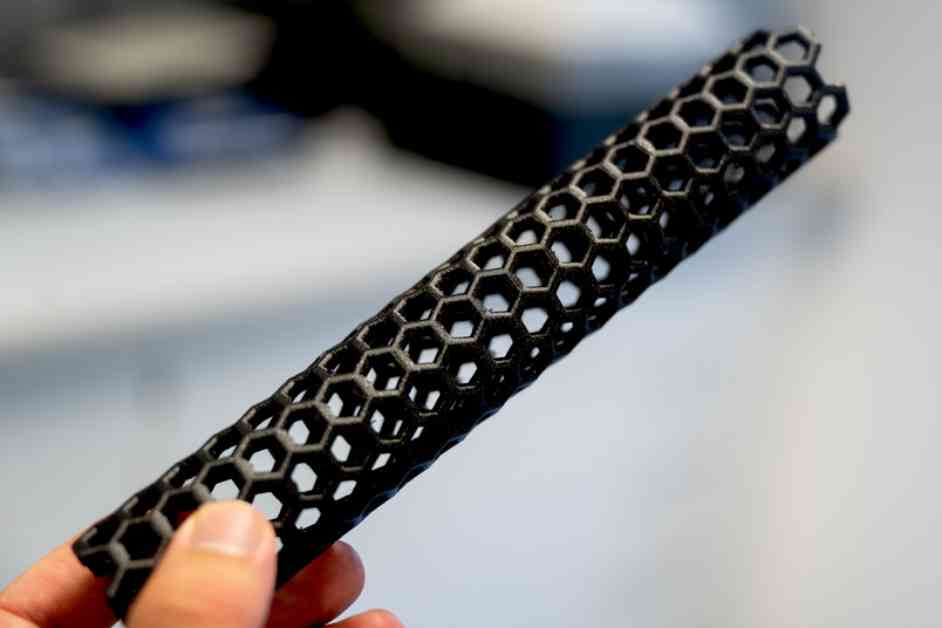Nanotubes as Biosensors: A Breakthrough in Fluorescence Understanding
Carbon nanotubes have long been recognized for their potential as biosensors due to their ability to change fluorescence when they bind to specific molecules. This unique characteristic has made them an attractive option for various applications, including blood sugar monitoring and Covid-19 testing. However, the exact mechanism behind this fluorescence has remained a mystery until now.
Researchers from Ruhr University Bochum in Germany and the University of Texas at El Paso in the USA have collaborated to shed light on the underlying cause of the fluorescence exhibited by carbon nanotubes. Their findings, published in the journal “Nature Communications,” reveal the critical role that local solvation plays in this process.
Understanding the Role of Water in Fluorescence
The researchers used terahertz spectroscopy to investigate how energy flows between carbon nanotubes and water in an aqueous solution. They discovered that the hydration shell of the biosensors, comprised of water molecules surrounding the nanotubes, plays a pivotal role in the fluorescence phenomenon. When a carbon nanotube is excited, the internal energy can interact with the vibrations of the hydration shell, leading to energy transfer between the water and the nanotubes.
This interaction with water molecules is crucial for the fluorescence exhibited by the nanotubes. Sensors that become brighter when binding to an analyte transfer less energy into the water, while sensors that become dimmer transfer more energy into the water. This intricate interplay between the nanotubes and the surrounding water provides a deeper understanding of how biosensors function and opens up new possibilities for their optimization in research and medical applications.
Implications for Biosensor Development
Professor Sebastian Kruss, one of the lead researchers on the study, emphasizes the significance of these findings for the development of optimal biosensors. He notes, “Terahertz spectroscopy allows us to measure directly what we had previously only suspected. These insights provide a general and rational design principle to develop optimal biosensors with the best performance for novel applications in research and medicine.”
The study’s co-author, Professor Martina Havenith, highlights the interdisciplinary nature of the research, focusing not only on the carbon nanotubes themselves but also on the role of water in their fluorescence. She states, “In this interdisciplinary study, we did not put the spotlight on the carbon nanotube itself. Instead, we put the spotlight on the solvent, water, and discovered a previously unknown direct correlation with the changes in the water around the carbon nanotube and the function as a biosensor. This is exactly what RESOLV stands for.”
The research funded by the German Research Society and the National Science Foundation represents a significant step forward in our understanding of biosensors and their potential applications in various fields. By elucidating the role of local solvation in biosensor fluorescence, the study paves the way for the development of more efficient and precise biosensors for a wide range of uses.
Applications of Carbon Nanotube Biosensors
The discovery of the importance of local solvation in biosensor fluorescence has far-reaching implications for the development of carbon nanotube-based biosensors. These biosensors have already shown promise in various applications, including the detection of neurotransmitters in the brain and monitoring blood sugar levels. With a deeper understanding of the mechanisms underlying their fluorescence, researchers can now explore new avenues for the use of these biosensors in medical diagnostics, environmental monitoring, and beyond.
One of the key advantages of carbon nanotube biosensors is their ability to be chemically tailored to interact with specific target molecules. By modifying the surface of the nanotubes with biopolymers or DNA fragments, researchers can create biosensors that are highly selective and sensitive to particular analytes. This customization opens up a world of possibilities for the development of biosensors tailored to specific applications, such as detecting disease markers in blood samples or monitoring environmental pollutants in water.
Future Directions in Biosensor Research
The breakthrough in understanding the role of water in biosensor fluorescence opens up new avenues for research in the field of biosensors. By focusing on the interaction between carbon nanotubes and their surrounding environment, researchers can explore novel strategies for enhancing the performance and sensitivity of biosensors. Future studies may investigate how different solvents affect the fluorescence of nanotubes, leading to the development of biosensors optimized for specific conditions or applications.
Furthermore, the insights gained from this study could inspire the design of innovative biosensors that exploit the unique properties of nanotubes and their interaction with solvents. By harnessing the principles uncovered in this research, scientists can create biosensors with enhanced capabilities for detecting a wide range of molecules with high precision and sensitivity. This could revolutionize the field of biosensing and open up new possibilities for applications in healthcare, environmental monitoring, and beyond.
In conclusion, the discovery of the importance of local solvation in biosensor fluorescence represents a significant advancement in our understanding of carbon nanotube biosensors. By unraveling the complex interplay between nanotubes and water molecules, researchers have unlocked new possibilities for the development of highly efficient and sensitive biosensors. This research lays the foundation for future innovations in biosensor technology and holds great promise for applications in various fields, from medical diagnostics to environmental monitoring.


